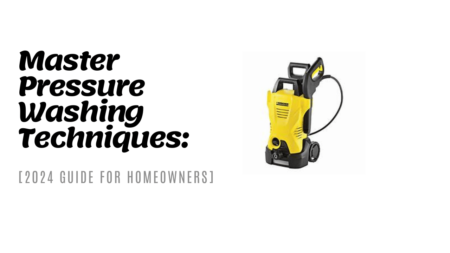![Ultimate Guide to Pressure Washer Maintenance [2024 Edition]](https://pressurwasher.com/wp-content/uploads/2024/05/Minimalist-Tutorial-Event-YouTube-Thumbnail-2024-05-30T230638.695-915x515.png)
Nothing’s worse than gearing up to tackle a big cleaning job, only for your pressure washer to give out mid-spray. A well-maintained pressure washer doesn’t just run smoother and more efficiently; it lasts longer, saving you from costly repairs.
In this guide, you’ll uncover simple yet effective maintenance tips to keep your machine in peak condition. Whether you’re a first-time user or a seasoned pro, these steps will ensure you maximize your pressure washer’s lifespan and performance. Let’s get started, so you’re never left high and dry when it’s time to clean.
Regular Inspection and Cleaning
To keep your pressure washer running smoothly, it’s important to perform regular inspections and cleaning. By catching potential issues early and keeping components clean, you can avoid costly repairs and extend the life of your machine. Here’s a breakdown of what you should be doing.
Inspecting Hoses and Connections
Regularly inspecting the hoses and connections of your pressure washer is crucial. Faulty hoses can lead to leaks or a loss of pressure, which impacts performance.
- Check for Leaks: Start by running water through the pressure washer without turning on the motor. Look for any dripping water. Leaks can often be found at the connections or along the hose itself.
- Look for Cracks: Inspect the entire length of the hose for any visible cracks or signs of wear and tear. Even small cracks can turn into big problems if not addressed.
- Ensure Tight Connections: Make sure all connections are tightly secured. Loose connections can lead to leaks and reduce the effectiveness of the washer. Re-tighten any that seem loose or replace gaskets if necessary.
Taking a few minutes to inspect these parts can save you from frustration later on.
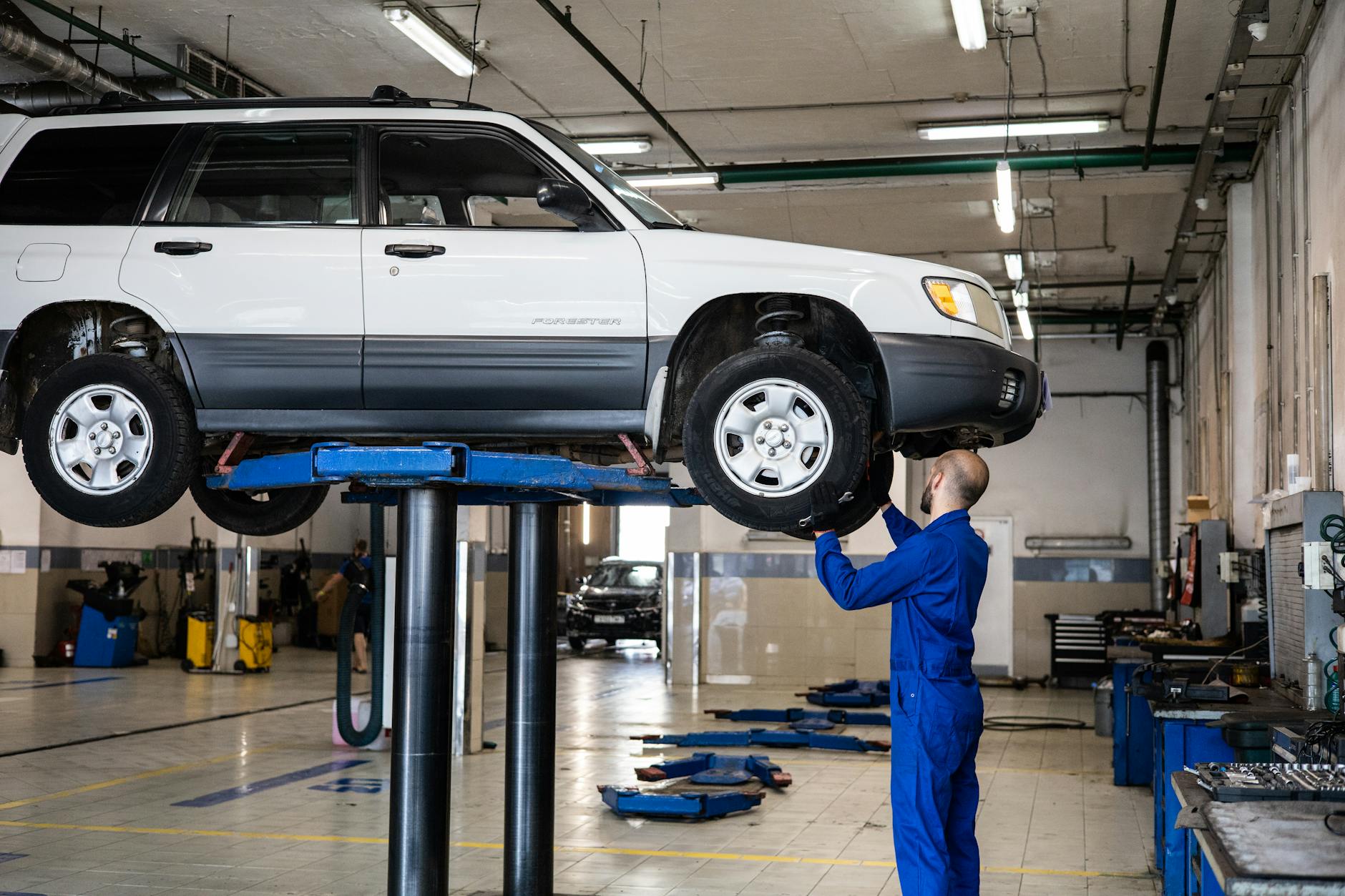 Photo by Artem Podrez
Photo by Artem Podrez
Cleaning the Nozzles
Nozzles can get clogged with dirt, debris, or mineral deposits over time, which affects the spray pattern and pressure.
- Remove the Nozzles: Begin by detaching the nozzle from the pressure washer wand. Refer to your user manual if you’re unsure how to do this properly.
- Use a Cleaning Tool: Most pressure washers come with a small needle-like tool for cleaning nozzles. Insert the tool into the nozzle to dislodge any blockages.
- Soak in Vinegar: If the nozzle appears to be clogged with mineral deposits, soak it in a small bowl of white vinegar for about an hour.
- Rinse and Reattach: After cleaning, rinse the nozzle thoroughly and reattach it to the wand.
Keeping the nozzles clean ensures a consistent and powerful spray.
Checking the Oil Levels
If you have a gas-powered pressure washer, checking and refilling the oil is a key step in maintenance.
- Locate the Oil Cap: Find the oil cap on your pressure washer engine. This is usually marked with an oil can symbol.
- Check Oil Level: Remove the oil cap and use a dipstick to check the oil level. If the oil is below the recommended level, it’s time to add more.
- Refill if Necessary: Use the oil type specified by the manufacturer and add it slowly, checking frequently to avoid overfilling.
- Replace the Oil Cap: Once the oil is at the correct level, securely replace the oil cap.
Frequent oil checks keep the engine running smoothly and efficiently. For more detailed instructions, you can check out these helpful tips on pressure washer maintenance.
By consistently performing these inspections and cleanings, you reduce the risk of your pressure washer failing when you need it the most.
Proper Storage Techniques
Taking good care of your pressure washer doesn’t stop at regular inspections and cleaning. Proper storage is key to maintaining its longevity and ensuring it’s ready to go when you need it. Storing your pressure washer the right way prevents damage and extends its life, especially during cold months when it might not be in use.
Draining Water from the Pump
One of the most important steps in storing your pressure washer is making sure all water is completely drained from the pump. This avoids any chance of water freezing and causing damage.
- Turn Off the Machine: First, make sure your pressure washer is turned off and unplugged from any power source.
- Disconnect Hoses and Nozzles: Remove the high-pressure hose and the garden hose from the unit.
- Drain the Pump: Squeeze the trigger on the spray gun to release any trapped water inside the pump. You may also want to tilt the pressure washer to let gravity help expel any remaining water.
- Use Pump Saver: Consider using a pump saver product. These products are specifically designed to prevent moisture from staying in the pump and to protect internal components from freezing and corrosion. Simply attach the pump saver to the water inlet and follow the instructions on the product.
Clearing out the water ensures that there’s nothing left inside that could freeze and damage the pump components.
Storing Indoors vs. Outdoors
Where you store your pressure washer can significantly affect its durability and performance. Both indoor and outdoor storage have their benefits and precautions.
Storing Indoors
Keeping your pressure washer indoors is the best option, especially in climates where freezing temperatures are common.
- Protection from Elements: Storing indoors shields your washer from rain, snow, and direct sunlight. These elements can cause rust and other damage over time.
- Controlled Temperature: An indoor storage area keeps the temperature more stable, preventing the risk of freezing in cold weather. Freezing can cause water left in the machine to expand and break internal parts.
- Better Security: Indoors, your pressure washer is safe from theft or vandalism.
Storing Outdoors
If indoor storage isn’t an option, you can still store your pressure washer outside. However, you’ll need to take extra precautions.
- Cover Up: Use a high-quality, waterproof cover to shield your pressure washer from rain and snow.
- Elevate from Ground: Place the washer on a platform or a few bricks to keep it off the ground. This helps prevent moisture from the ground from seeping into the machine.
- Secure Location: Choose a spot that’s safe and away from direct sunlight to minimize exposure to harsh weather and UV rays.
Storing your pressure washer properly, whether indoors or outdoors, will help it stay in good condition and ready for your next big cleaning project.
Regular Maintenance Tasks
Performing regular maintenance tasks on your pressure washer ensures it runs efficiently and lasts longer. Here are two key tasks you should focus on:
Replacing the Air Filter
In gas-powered units, the air filter plays a crucial role in engine performance. It keeps dirt and debris from entering the engine, which can cause damage and reduce efficiency. Replacing the air filter is something you should do regularly.
- Identify When to Replace: Check the air filter every three months or after 50 hours of use, whichever comes first. If the filter looks dirty or damaged, it’s time for a replacement.
- Access the Air Filter: Start by turning off the engine and disconnecting the spark plug wire for safety. Locate the air filter cover, which is usually on the side of the engine.
- Remove the Old Filter: Open the cover and take out the old filter. Be careful not to let dirt fall into the filter housing.
- Install the New Filter: Insert a new air filter in place of the old one. Make sure it fits securely. Close the cover and reconnect the spark plug wire.
 Photo by Antoni Shkraba
Photo by Antoni Shkraba
A clean air filter ensures your engine runs smoothly and efficiently. For more detailed steps, check out these helpful tips on air filter maintenance.
Checking and Replacing O-Rings
O-rings are small but vital components in your pressure washer. They create a watertight seal at connection points, preventing leaks and maintaining pressure.
- Importance of O-Rings: Over time, O-rings can wear out or get damaged. Worn O-rings lead to water leaks, reduced pressure, and eventually, damage to your pressure washer.
- Check Regularly: Inspect the O-rings every couple of months. Look for cracks, deformities, or any signs of wear and tear.
- Removing Old O-Rings: Begin by turning off the pressure washer and releasing any trapped pressure. Remove the hose connections and gently pry out the old O-rings using a flat tool or a small screwdriver.
- Installing New O-Rings: Before installing new O-rings, apply a bit of silicone grease to them. This lubricates the O-rings and helps them last longer. Place the new O-rings in the grooves and reattach the hoses and fittings.
These small steps can make a big difference in keeping your pressure washer leak-free and running efficiently.
By regularly replacing the air filter and checking O-rings, you can avoid many common issues that pressure washer owners face. These tasks take just a few minutes but offer long-term benefits, keeping your machine in perfect working condition.
Troubleshooting Common Issues
Pressure washers are powerful tools, but they can run into problems. Knowing how to troubleshoot these issues can save you time and money. Below, we’ll explore some common problems and how to fix them.
Low Pressure Output
Low pressure output can make your pressure washer ineffective. Here are some potential causes and solutions:
- Clogged Nozzle: A clogged nozzle is a common reason for low pressure. Use a nozzle cleaning tool or a needle to clear any blockages.
- Dirty Water Filter: Check the water filter and clean it if it’s dirty. A clogged filter restricts water flow.
- Inadequate Water Supply: Ensure the water supply is adequate and the hose isn’t kinked. A low water supply can reduce pressure.
- Worn Out Pump: If the pump is worn out, it may need replacement. Pumps can wear out over time due to heavy use.
- Check for Leaks: Inspect hoses and connections for leaks. Even a small leak can cause a significant drop in pressure.
By addressing these potential causes, you can restore your pressure washer to full power.
Engine Not Starting
A gas engine that won’t start can be incredibly frustrating. Here are steps to troubleshoot this issue:
- Check Fuel: Ensure there is enough fuel in the tank. Old or contaminated fuel can also cause problems, so use fresh fuel if needed.
- Spark Plug Issues: Inspect the spark plug. If it’s dirty or damaged, clean or replace it. Ensure the spark plug wire is connected securely.
- Air Filter: A dirty air filter can prevent the engine from starting. Check the air filter and replace it if it’s dirty.
- Choke Setting: Make sure the choke is in the correct position. A wrong choke setting can hinder the engine from starting.
- Oil Level: Check if the oil level is low. Many pressure washers have a low oil sensor that prevents the engine from starting if the oil is too low.
Follow these steps, and your engine should roar back to life.
Water Leaks
Water leaks can reduce efficiency and cause further damage. Identify and fix leaks with these steps:
 Photo by Nathan Cowley
Photo by Nathan Cowley
- Inspect Hoses: Look for visible cracks or holes in the hoses. Replace any damaged hoses.
- Check Connections: Ensure all connections are tight. Loose connections often cause leaks.
- O-Rings and Seals: Worn out O-rings or seals can be a source of leaks. Inspect them and replace if necessary.
- Pump Leaks: If the pump is leaking, it may need a new seal or gasket. In some cases, the pump may need professional repair.
Fixing leaks promptly ensures your pressure washer operates efficiently.
By following these troubleshooting steps, you can keep your pressure washer in top condition, ready to tackle any cleaning job. For more in-depth troubleshooting, check out this comprehensive guide.
When to Seek Professional Help
Sometimes, maintaining your pressure washer at home just doesn’t cut it. Knowing when to seek professional help ensures your machine stays in top shape and can save you from bigger headaches down the line. Here are key scenarios where calling in a pro is your best bet.
Complex Repairs
Pressure washers have intricate components that can be tricky to fix without the right expertise. Here are some repairs best left to professionals:
- Pump Issues: The pump is the heart of your pressure washer. If it’s not working correctly, you may notice reduced water pressure or strange noises. Pumps often require specialized tools and parts to repair or replace.
- Engine Troubles: For gas-powered units, the engine can have issues like stalling, misfiring, or failing to start. These problems often need in-depth diagnostics and repairs, best handled by a mechanic with experience in small engines.
- Electrical Problems: Electric pressure washers can suffer from wiring issues, faulty switches, or motor problems. Working with electricity poses risks, so it’s safer to have a professional handle these repairs.
- Significant Leaks: Small leaks can be fixed with a simple O-ring replacement, but significant or persistent leaks might indicate deeper issues with seals or the pump itself, requiring expert attention.
When dealing with these complex problems, it’s wise to find a reputable service professional who can diagnose and fix the issue correctly. For guidance, check out this comprehensive guide on pressure washer repair services.
Annual Service
Even if your pressure washer seems to be running fine, an annual service by a professional is a smart move. This ensures all parts are functioning optimally and can extend the life of your machine.
- Thorough Inspection: Professionals will conduct a complete inspection, checking for any wear and tear on vital components. This helps catch issues early before they become major problems.
- Deep Cleaning: A pro can perform a deep clean of your pressure washer, including parts you might miss, like the internal pump. This removes any debris or buildup that could affect performance.
- Tune-Up Services: Tune-ups often include oil changes, spark plug replacement, and air filter cleaning or replacement. These tasks keep your washer running smoothly and efficiently.
- Professional Advice: Technicians can provide personalized maintenance tips based on the condition of your machine, helping you care for it better at home.
 Photo by Andrea Piacquadio
Photo by Andrea Piacquadio
Scheduling a yearly service visit is like giving your pressure washer a health check-up. For more details on the benefits of professional maintenance, see this article on annual pressure washer servicing.
Knowing when to seek professional help is crucial in keeping your pressure washer in peak condition. By recognizing complex repairs and committing to annual servicing, you can ensure your machine remains reliable and efficient for years to come.
Conclusion
Regular maintenance of your pressure washer is key to its longevity and efficiency. By taking the time to inspect hoses, clean nozzles, check oil levels, and store the machine properly, you’ll avoid unexpected breakdowns and costly repairs.
Simple tasks like replacing air filters and O-rings can keep your pressure washer running smoothly. Troubleshooting common issues gives you the know-how to fix problems quickly, while knowing when to seek professional help ensures complex repairs are handled correctly.
A well-maintained pressure washer not only performs better but also lasts longer. Invest a little time in upkeeping your machine, and it will pay off with reliable performance for years to come. Keep your pressure washer in top shape, so it’s always ready to tackle your toughest cleaning jobs.
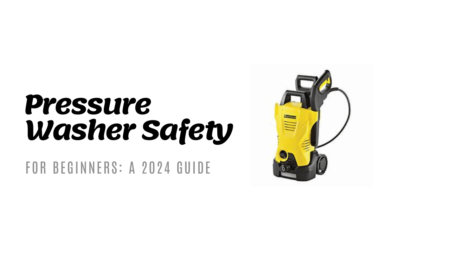
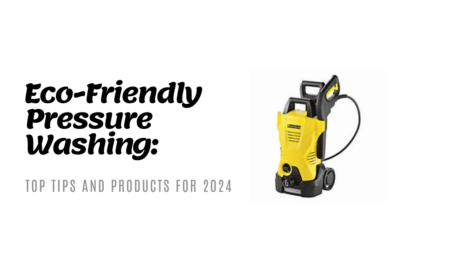
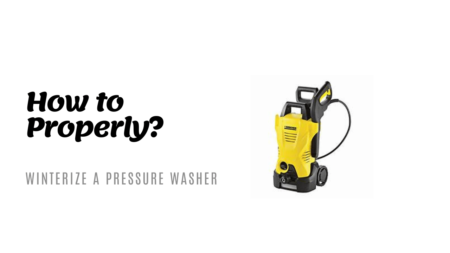
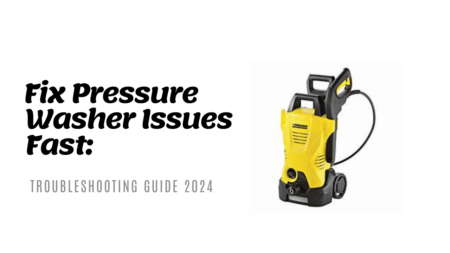
![Pressure Washing Regulations: What You Need to Know [Updated 2024]](https://pressurwasher.com/wp-content/uploads/2024/05/Minimalist-Tutorial-Event-YouTube-Thumbnail-2024-05-31T224409.854-450x253.png)
